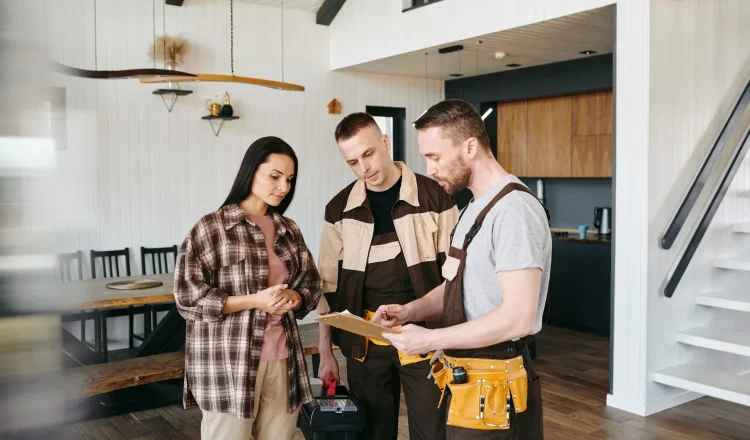The Ultimate Rental Property Maintenance Checklist: A Step-by-Step Guide
As a landlord, you are responsible for ensuring that your rental property is well-maintained and provides a safe and comfortable living space for your tenants. However, with multiple tasks and responsibilities, it can be overwhelming to keep track of everything that needs to be done.
That’s why we have created the ultimate rental property maintenance checklist – a step-by-step guide to help you stay on top of all the necessary maintenance tasks. From routine inspections to emergency repairs, this checklist covers it all in an engaging and easy-to-follow format. So let’s dive in and make sure your rental property is in tip-top shape for your tenants!
Understanding the Importance of Regular Maintenance
Regular maintenance is the lifeblood of your rental property’s long-term success. But why is it so crucial? Let’s delve deeper into the importance of regular maintenance:
Preserving Property Value:
Regular upkeep helps retain and even enhance your property’s value. It keeps the structure sound, the systems efficient, and the overall aesthetic appealing. Whether it’s timely repainting, replacing worn-out fixtures, or landscaping, every bit contributes to preserving your property’s worth.
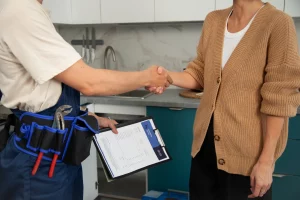
Attracting and Retaining Quality Tenants:
Tenants appreciate a well-maintained property. It not only signifies a safe and comfortable living space, but also showcases your commitment as a responsible landlord. Regular maintenance, in turn, attracts quality tenants and encourages them to stay longer, reducing your vacancy rates.
Preventing Major Repairs and Costs:
By conducting routine checks, you can identify and rectify minor issues before they snowball into bigger, costlier problems. This not only saves you from unexpected expenditure but also from the inconvenience of extensive repairs.
Compliance with Laws and Regulations:
Regular maintenance ensures your property is up to code, abiding by the local safety regulations and housing standards. This can save you from potential legal issues or penalties.
Creating a Preventative Maintenance Schedule
Establishing a preventative maintenance schedule is a key step in rental property maintenance. This plan acts as your roadmap to conducting routine checks and taking preventive measures to keep your property in great condition. Here’s how you can develop an effective preventative maintenance schedule:
Identify Key Maintenance Areas:
Firstly, make a list of all the areas of your property that require regular maintenance. This could include the property’s structure, various systems like HVAC, plumbing and electrical, interior and exterior spaces, and appliances.
Schedule Routine Checks:
Once you’ve identified these areas, set a timeline for regular inspections. This could be monthly, quarterly, biannually, or annually, depending on the maintenance area’s nature and usage. For instance, HVAC systems might need a biannual check, while outdoor areas might require monthly upkeep.
Prioritize Tasks:
Not all maintenance tasks hold the same urgency. Some tasks need immediate attention, while others can be scheduled for a later date. By prioritizing your tasks, you can manage your time and resources effectively.
Document Everything:
Keep detailed records of all your maintenance checks, repairs, and replacements. This documentation serves as a valuable reference for future maintenance planning and for potential legal or insurance purposes.
Stay Flexible:
Lastly, while it’s essential to stick to your schedule, don’t shy away from adjusting it as necessary. A preventative maintenance schedule should be dynamic and adaptable to accommodate any unforeseen issues or changes in your property’s needs.
Inspecting Property Systems and Appliances
Keeping your property systems and appliances in top condition is crucial to the overall maintenance of your rental property. This process involves carrying out regular inspections and prompt repairs or replacements when necessary. Here are the key systems and appliances to focus on:
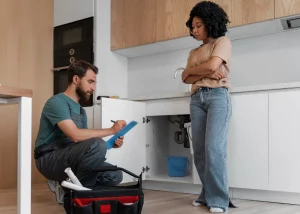
HVAC System:
As a landlord, ensuring that your HVAC system is functioning optimally is critical. Regularly check the air filters, ducts, and vents for any blockage or damage. Having a professional inspect and service your HVAC system twice a year can prevent unexpected breakdowns and extend its lifespan.
Plumbing System:
Regularly inspect your property’s plumbing system for leaks, drips, or low water pressure. Check the faucets, showerheads, and toilets for functionality. Additionally, regular drain cleaning can prevent clogs and back-ups.
Electrical System:
Periodic checks of your property’s electrical system can prevent electrical fires or other safety hazards. Look out for flickering lights, malfunctioning outlets, or old wiring. A licensed electrician should perform more detailed inspections.
Appliances:
Whether it’s the refrigerator, dishwasher, washing machine, or oven, it’s essential to check all the appliances for any signs of wear or malfunction. If an appliance is frequently causing problems, consider whether it’s more cost-effective to repair or replace it.
Dealing with Emergency Repairs
Unexpected events are an unavoidable aspect of rental property management. When emergency repairs crop up, having a clear-cut plan of action can turn chaos into order. Here are some steps to follow:
React Promptly:
The key to handling emergencies is to act swiftly. Whether it’s a leaking pipe, a broken HVAC system, or a power outage, each hour counts. Quick action minimizes damage, prevents further issues, and shows your tenants that their safety and comfort are your top priority.
Employ Trusted Professionals:
It’s crucial to have a reliable network of service professionals to call in case of emergencies. These could include plumbers, electricians, HVAC technicians, and general contractors. Remember, quality repairs now can save you from recurring issues in the future.
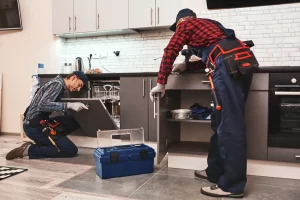
Communicate with Your Tenants:
Clear communication with your tenants during emergencies is vital. Keep them informed about what’s happening, what steps are being taken, and how long it might take to rectify the issue. This transparency fosters trust and patience amid the inconvenience.
Review and Learn:
Post the emergency, review what happened and why. Was it a preventable issue? Could a regular maintenance check have caught it earlier? Use this review to refine your preventative maintenance schedule and emergency response plan. Every emergency is a learning opportunity to better your rental property management.
Handling Tenant-Caused Damage
Damages caused by tenant mishaps or negligence are not uncommon in the rental property business. In such scenarios, transparency is key. Clearly, articulated tenant responsibilities within the lease agreement can provide a guideline on how to handle these situations. A comprehensive move-in and move-out inspection checklist becomes an invaluable tool to pinpoint and address such damages swiftly.
This checklist enables you to identify any changes or damage that occurred during the tenancy period, making it easier to address the issue directly with the tenant. Remember, prompt action and open communication can prevent these damages from escalating into major repairs or legal disputes.
Hiring a Property Management Company
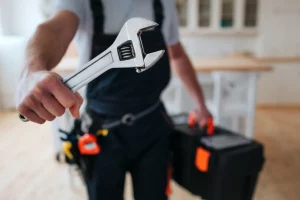
Property maintenance can seem overwhelming, especially if you own multiple properties. This is where property management companies come into play. Think of these companies as your right-hand man. They handle every aspect of maintenance, from routine check-ups to unforeseen emergency repairs and even address tenant-caused damages.
With a dedicated team working round-the-clock, you can rest assured that your property stays in pristine condition without having to deal with the nitty-gritty details. Not only does this save you a great deal of time and stress, but it also allows you to focus on other important aspects of your business. So, consider bringing a property management company on board.
Reviewing Maintenance Costs and Budgeting
Conducting a periodic review of your rental property’s maintenance expenses is a smart way to keep your budget in check. After all, understanding where your money goes is the first step in financial planning. This should ideally happen annually, but it’s wise to stay flexible as costs could vary based on the age, condition, and location of your property.
Moreover, keep in mind that regular, small-scale maintenance often proves to be easier on the wallet compared to the heavy financial toll that major repairs can bring about due to neglect. It’s a practical case of ‘a stitch in time saves nine.’ Lastly, always remember that your well-maintained property is like a magnet. It pulls in high-quality tenants and keeps them there, ensuring a steady cash flow.
Conclusion
In conclusion, maintaining your rental property is a multi-faceted responsibility, but it doesn’t have to be overwhelming. By implementing a preventative maintenance schedule, conducting regular inspections, handling emergencies effectively, managing tenant-caused damages, considering a property management company, reviewing maintenance costs, and implementing a tenant maintenance request system, you can keep your property in excellent condition, attract high-quality tenants, and protect your investment.

